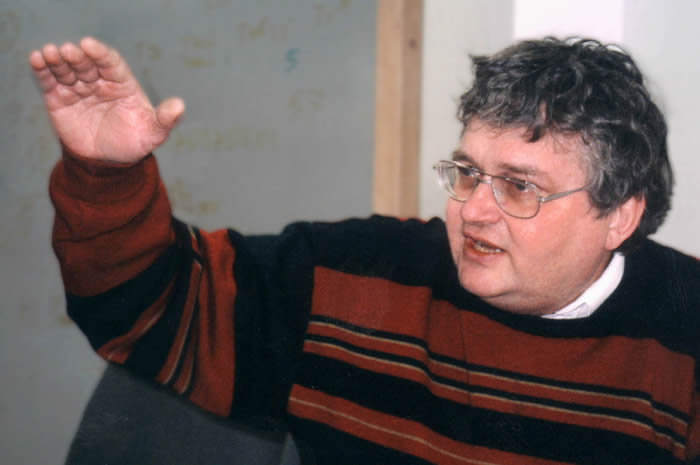Is the answer to the universe's greatest mystery hidden in a pile of sand? Theoretical physicist Per Bak thinks it may be. He believes science's greatest challenge is to figure out how the universe's complex phenomena emerge from laws of physics, laws so simple that they all can be written down on a single piece of paper. So he studies emergent, complex phenomena -- like traffic jams and mass extinctions and avalanches -- by looking at their parts.
What interests Professor Bak is life. Economics. History. How can you start with quarks and gluons and get humans and astrophysics and earthquakes? So he studies grains of sand. And the cars that make up traffic. He looks at the parts to understand the whole. (It's known as bottom-up science, as compared to traditional top-down physics.) Say goodbye to a nice, steady, equilibrium perspective, says Professor Bak. Equilibrium equals death. Things do not rock along smoothly, change in small increments. Change is catastrophic. We must learn to adapt because we cannot predict.
Per Bak is credited with discovering a process for understanding complex systems called self-organized criticality -- self-organized because no engineer had a hand in them, critical because they balance at a critical point between order and chaos. That's where interesting things happen, he says. Like life.
It's all within the laws of physics, he assures us, claiming (as physicists are wont to do) all of the universe for his discipline. We just don't really understand what those laws are, he says. That requires a very different way of thinking. Science as such is not changing, he says -- curiosity is still the only reason for doing it, it is still empirical, requires observing and describing the reality we see. But the language of science IS changing. Contingency is a very important part of that language: what happens affects what happens affects what happens. Narrative -- what Professor Bak calls the language of history -- is what science now requires.
We are further constrained by our imaginations. The farthest afield we can go is into what Per Bak and others call the Adjacent Possible. We cannot imagine a world entirely different from our own, our brains cannot visualize what could have happened, we can only visualize what did happen and extrapolate a bit. That locks us into our history.
Based on his observations of how nature works, Dr. Bak suggests a two fold strategy for coping with the complexities humanity faces. Don't try to optimize and predict. Can't be done. Adapt. It's something nature has been doing for a long, long time.
[This Program was recorded February 1, 2000, in Santa Fe, New Mexico, U.S.]
Narrative Physics
 |
Per Bak
|








